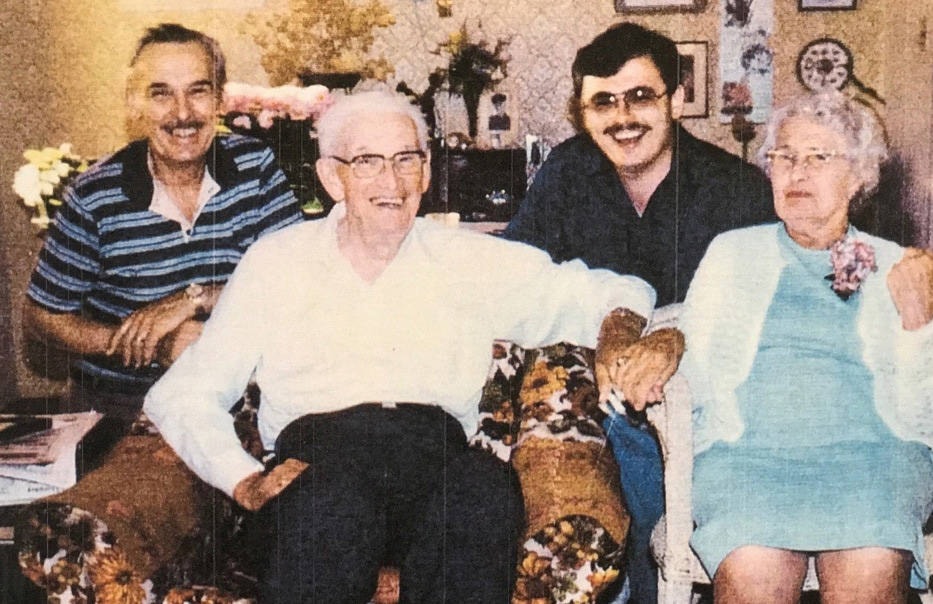“The snow was so heavy that some men lost their sense of direction. When Allan Hart, a (sergeant) with the Winnipeggers, reached the top of the ridge, he didn’t know which way to go. To him the battle had taken on an unearthly aspect. Encased in a cocoon of sound and in the white mantle of the blizzard, he could see in the gun flashes the ghostly shapes of men falling all around him. It did not occur to him that these men were hit. He simply thought they’d fallen into a shell hole or lost their bearings, as he had. Like so many others during those days of battle, he had no clear picture of what was going on. Later that same morning he found himself on the far side of the ridge, all alone, with no idea of how he’d gotten there. Over to his left he spotted some troops. These were the Japanese Canadians from the reserve battalion – the 47th from British Columbia. It added to the weirdness of the occasion – the (soldiers) squatting on their haunches, grinning because the fight was over and they were still alive, and the soft snow still falling, mercifully concealing the ghastly carnage of war.”
– From Vimy, by Pierre Berton
Canadian author and historian – and former Oak Bay resident – Pierre Berton recounted the above scene in his book Vimy, exploring the Canadian experience at the First World War’s Battle of Vimy Ridge.
Germany had captured the ridge in northern France early in the war, transforming it into a strong defensive position, with a complex system of tunnels and trenches fortified with skilled soldiers, many machine guns and artillery pieces. “Previous Allied assaults on Vimy Ridge in 1914 and 1915 had resulted in hundreds of thousands of casualties but had been largely unsuccessful,” notes Veterans Affairs Canada.
Then, on April 9, 1917, the Canadians tackled the target, in what would become by many accounts a defining moment in the formation of Canadian identity. For the first time, all four Canadian divisions fought together as a unified force, notes the Vimy Foundation. “While 3,598 Canadian soldiers were killed during the battle, the impressive victory over German forces is often cited as the beginning of Canada’s evolution from dominion to independent nation…”
Launching at 5:30 a.m. on Easter Monday, the first wave of 15,000 to 20,000 Canadian soldiers attacked through snow and sleet into an onslaught of machine gun fire.
From the approximately 100,000 Canadians who fought at Vimy, more than 10,600 casualties were recorded, including nearly 3,600 deaths.
While Allan Hart emerged physically uninjured from the battle on Vimy Ridge, the emotional impacts were deep, says his grandson, also Allan Hart, the family historian who today lives in Oak Bay with his family.
He shared a moving discussion with his grandfather before his death that revealed the sheer magnitude of his war experiences, which, like many soldiers of the era, he kept to himself most of his life.
“He was just 21 again,” the younger Allan says. “It was so horrific. All I could do was listen, and learn perhaps.
“If you’re not a student of history, you will repeat it”
Hart was born in 1893 to Canadian parents in Chicago, soon moving to Winnipeg, where he grew up. Enlisting as a private with the 44th Battalion (Winnipeg) on Dec. 14, 1914, he was promoted to sergeant in May 1916 and landed in France in August that year.
Following his efforts at Vimy Ridge, Hart was battlefield promoted for valor and soon after received the Military Medal for “gallantry and devotion under fire.”
Always humble, his view was that he received the honour for being in the right place at the right time.
His grandson has a slightly different impression. “There was a reason Pierre (Berton) interviewed my grandfather,” Allan says.
Hart finished the war as a lieutenant stationed near Folkstone, Kent in England where he met his future bride, Maud Curties. The two sailed to Winnipeg where they lived until retiring to Oak Bay in 1974.
Before Hart died in 1985 at age 92, followed by Maud the next year, he was interviewed by Berton for Vimy. While Hart never saw the book in print, the younger Allan had Berton sign the book for his father.
“The thing I took away from those discussions that have governed my life and career is comradeship,” Allan says.
“Without question, his take-away besides surviving, was human kindness, even after the most atrocious time.”
On a personal level, Allan says he keeps close the awareness that life is not always easy, but during the darkest times, projects himself back to standing beside his grandfather in the trenches, reflecting upon what he worked through.
Allan, with his wife and children, visited France in 2010.
“I wanted to go up to Vimy. They came to keep me company. We got there and it was overwhelming,” he says.
While he had hoped to return for the centennial, the sheer number of people attending was so great Allan turned his attention to Oak Bay, his grandparents’ retirement home.
Contacting municipal hall, he learned no special service was planned for the municipality’s cenotaph, so he got permission to lay a wreath in honour of his grandfather and the many sacrifices made at Vimy.
The personal impact will be significant, he knows, though “it won’t hit me until I’m standing there.”
Did you know?
To underscore Canada’s sacrifices, France granted Canada 107 hectares of land at Vimy to build and maintain a memorial. “That iconic site is today considered one of the most stirring of all First World War monuments, and certainly Canada’s most important war memorial,” the Vimy Foundation notes.
Visit vimyfoundation.ca for more information.
